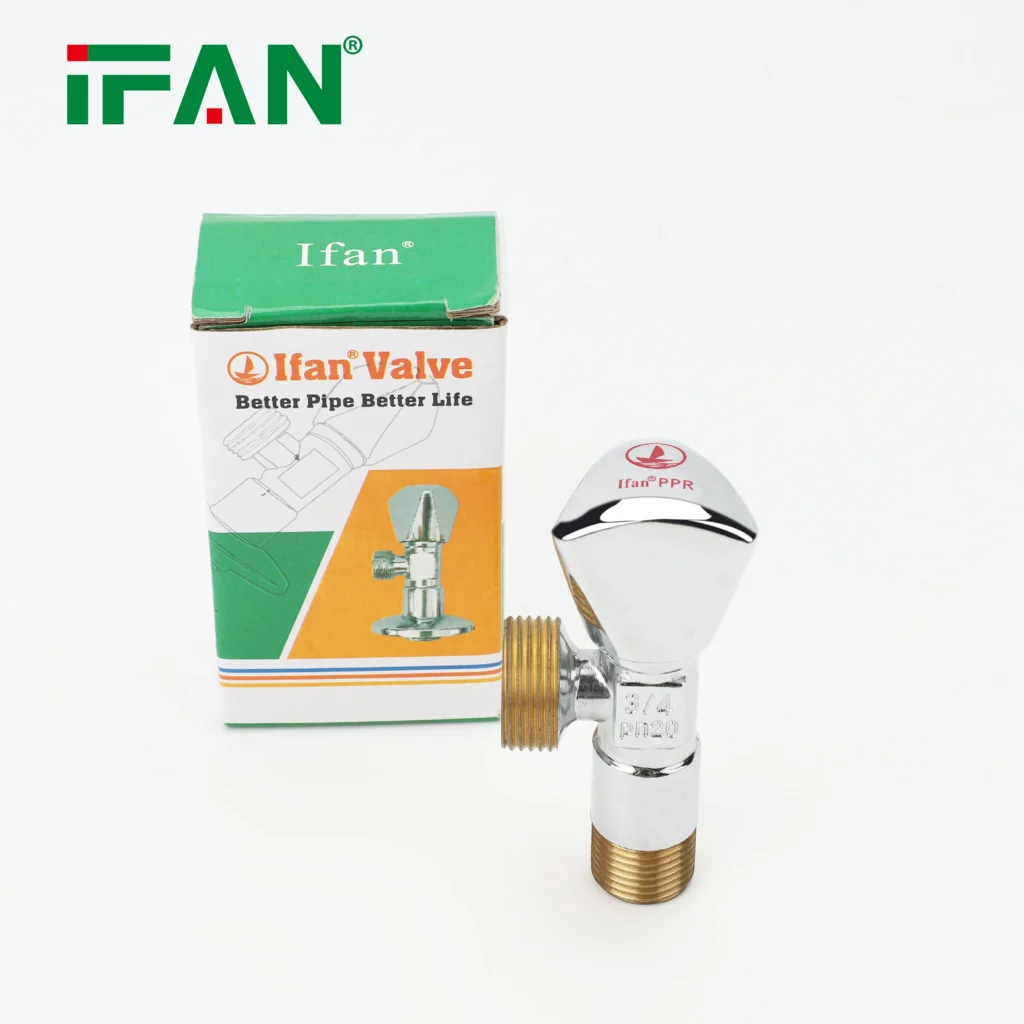1. Tools & Materials Required
- Brass angle valve (correct size: typically ½” inlet × ⅜” or ½” outlet)
- Adjustable wrench or basin wrench (for tight spaces)
- Pipe cutter or hacksaw (if replacing old pipe)
- Deburring tool or sandpaper
- Teflon tape (for threaded connections) or pipe thread sealant
- Bucket/towel (to catch residual water)
- Pressure tester (optional, for leak checks)
2. Pre-Installation Step
2.1 Brass Angle Valve Shut Off Water Supply
- Turn off the main water supply or isolate the line.
- Open downstream faucets to drain residual water.
2.2 Prepare the Pipe
- Cut the pipe cleanly (if replacing old valve) using a pipe cutter.
- Deburr the cut end to prevent leaks and damage to seals.
- Measure and dry-fit the valve to ensure proper alignment.
3. Installation Methods
3.1 Compression Fitting Installation (Most common for DIY)
- Slide the compression nut onto the pipe, followed by the ferrule (brass ring).
- Insert the pipe fully into the valve’s compression port.
- Hand-tighten the nut, then use a wrench to secure ¼ turn past snug (avoid over-tightening).
3.2 Threaded/Sweat Connection (For soldered or threaded pipes)
- Threaded: Wrap Teflon tape clockwise (3–5 layers) on male threads before screwing in the valve.
- Sweat (Soldered): Solder the valve onto a cleaned copper pipe using flux and lead-free solder.
4. Post-Installation Checks
- Slowly turn on water supply and check for leaks.
- Tighten compression nut slightly if weeping occurs.
- Test valve operation—turn handle to verify smooth shut-off.
5. Pro Tips to Avoid Issues
✔ Avoid overtightening—compression ferrules can deform, causing leaks.
✔ Use two wrenches—hold the valve body while tightening to prevent twisting pipes.
✔ For hard water areas, apply silicone grease on the valve stem to prevent scaling.
6. Common Mistakes & Fixes
| Issue | Cause | Solution |
|---|---|---|
| Leak at nut | Loose/damaged ferrule | Re-cut pipe & replace ferrule |
| Stiff handle | Debris in valve | Flush line or replace valve |
| Low water pressure | Partially closed valve | Fully open valve or check for clogs |
7. Compliance & Safety
- Ensure the valve meets NSF/ANSI 61 for potable water.
- For gas applications, use gas-rated valves (e.g., BS EN 331).
View more:https://www.ifanfittings.com/


